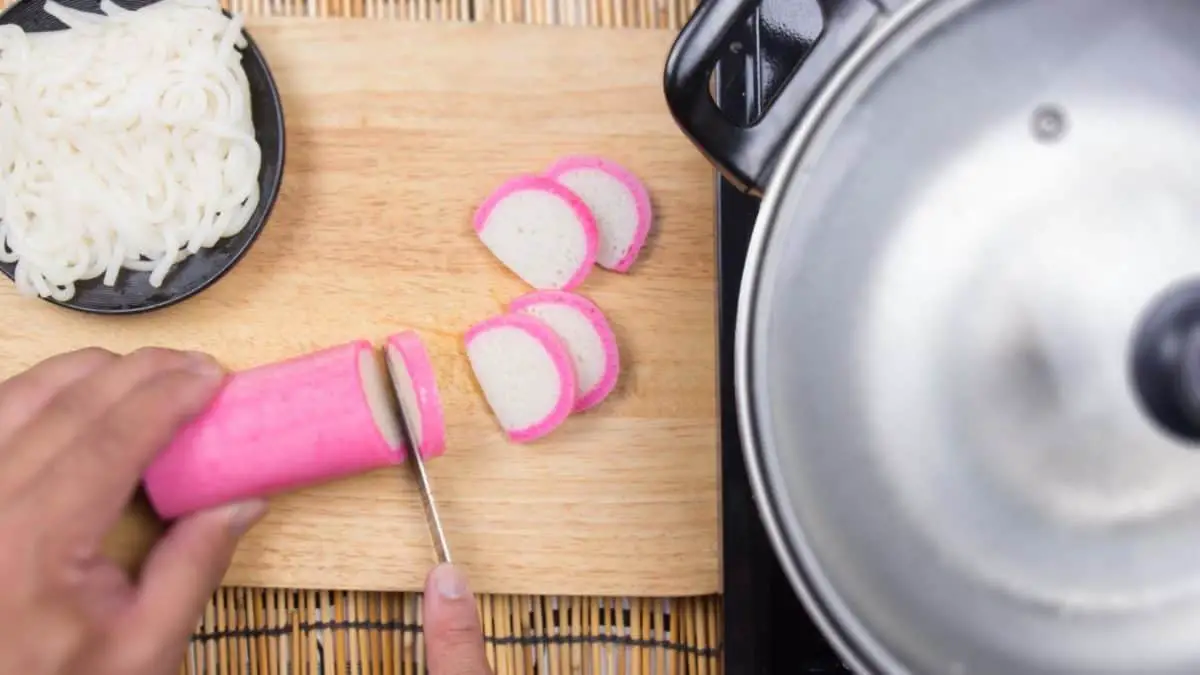How to use Kamaboko: Does It Need To Be Cooked?
Kamaboko is a processed fish cake popular in Japanese cuisine. It is made from white fish and sometimes contains other ingredients such as mirin and fish sauce.
Kamaboko can be eaten either straight from the log or cooked, but it is most commonly boiled and then sliced into thin pieces.
So what do you do with Kamaboko? Does it need to be cooked? The answer may surprise you!


Check out our new cookbook
Bitemybun's family recipes with complete meal planner and recipe guide.
Try it out for free with Kindle Unlimited:
Read for freeIn this post we'll cover:
Does kamaboko need to be cooked?
Kamaboko doesn’t need to be cooked because it already is cooked before it’s packaged. You could eat it “raw” straight from the log, although that is not the correct way of putting it because it isn’t raw to begin with.
You can even cut off pieces from a frozen log of kamaboko and use it directly in your hot soup. The soup will defrost it in no time.
How long should you boil kamaboko?
If you choose to boil kamaboko, then it should only be for about 3 minutes. Any longer and the fish cake will become rubbery.
In fact, you should add the kamaboko at the last few minutes of cooking your dish if you’re going to add them, just to get them heated all the way through.
You don’t want to overcook the fish cakes because that would ruin the texture and make them almost unbeatable.
Also read: these are the 3 best kamaboko substitutes if you can’t find any right now
Slicing kamaboko
Kamaboko is generally sliced into thin pieces before being eaten. This can be done with a knife or mandoline. The thickness of the slices is a matter of personal preference.
If you are using kamaboko as a garnish, then you might want to cut it into decorative shapes using a knife or cookie cutter.
Kamaboko can be served with rice, noodles, or in soup. It is often used as a garnish for bento boxes.
Also read: this is how you can make kamaboko yourself using a simple 30 minute recipe
Uses of kamaboko
The world has a newfound interest in kamaboko in the last few years. Since the third quarter of 2019, the amount of searches for it worldwide has skyrocketed, and home cooks all over the world are starting to use it.
Kamaboko popularity over time
Kamaboko is most popular in Singapore and is also often used in the Philippines. The Philippines is a country that uses a lot of Japanese ingredients for several of their own dishes, so this comes as no surprise.
Most search popularity, measured in % of searches for kamaboko in that country, is seen in south-east Asian countries. The United States comes in 8th place in recent years.
Different ways to eat Kamaboko
There are a few different ways to eat these fish cakes depending on the meal you’re preparing.
Serving slices as is
Kamaboko can be a nice snack or side dish as chilled slices. You usually eat them with chopsticks and add a little wasabi, then dip them in soy sauce to enhance the taste.
Grilled kamaboko slices
You can grill the slices of kamaboko for a few minutes. This gives them a warm toasty flavor so you can eat them just on their own without the need for anything extra.
Slices in your soup
The most common way of eating them is as slices of fish cake in your soup, often used in ramen but they can be used in other dishes as well.
Tempura kamaboko
Can you fry kamaboko?
You can coat the kamaboko in flour and deep-fry them for a delicious and crunchy outside while still having a slightly chewy inside.
A great combination.
Check out our new cookbook
Bitemybun's family recipes with complete meal planner and recipe guide.
Try it out for free with Kindle Unlimited:
Read for freeJoost Nusselder, the founder of Bite My Bun is a content marketer, dad and loves trying out new food with Japanese food at the heart of his passion, and together with his team he's been creating in-depth blog articles since 2016 to help loyal readers with recipes and cooking tips.
